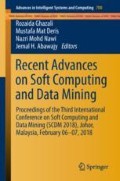Abstract
The major aim of artificial general intelligence’s (AGI) is to allow a machine to perform general intelligence tasks similar to human counterparts. Hypothetically, this general intelligence in a machine can be achieved by establishing cross-domain optimization and learning machine approaches. However, contemporary artificial intelligence (AI) capabilities are only limited to narrow and specific domains utilizing machine learning. Consciousness concept is particularly interesting topic to attain the approaches because it simultaneously encodes and processes all types of information and seamlessly integrates them. Over the last several years, there has been a resurgence of interest in testing theories of consciousness using computer models. The studies of these models are classified into four categories: external behavior associated with consciousness, cognitive characteristics associated with consciousness, a computational architecture correlate of human consciousness and phenomenally of conscious machine. The critical challenge is to determine whether these artificial systems are capable of conscious states by providing a measurement the extent to which the systems are succeeded in realizing consciousness in a machine. Several tests for machine consciousness have been proposed yet their formulation is based on extrinsic measurement of consciousness. Yet extrinsic measurement is not inclusive because many conscious artificial systems behave implicitly. This research proposes a new framework to test machine consciousness based on intrinsic measurement so-called Pak Pandir test. The framework leverages three quantum double-slit settings and information integration theory as consciousness definition of choice.
Access this chapter
Tax calculation will be finalised at checkout
Purchases are for personal use only
References
Aleksander, I., Burnett, P.: Thinking machines : the search for artificial intelligence. Knopf (1987)
Tononi, G.: An information integration theory of consciousness. BMC Neurosci. 5(1), 42 (2004)
Tononi, G.: Consciousness as integrated information: a provisional manifesto. Biol. Bull. 215(3), 216–242 (2008)
Brooks, R.A., Breazeal, C., Marjanović, M., Scassellati, B., Williamson, M.M.: The Cog project: building a humanoid robot, pp. 52–87 (1999)
Dennett, D.C.: Consciousness in human and robot minds. Cogn. Comput. Conscious. 1, 1–10 (1994)
Dehaene, S., Kerszberg, M., Changeux, J.-P.: A neuronal model of a global workspace in effortful cognitive tasks. Proc. Natl. Acad. Sci. 95(24), 14529–14534 (1998)
Steels, L.: Language games for autonomous robots. Intell. Syst. IEEE 16(5), 16–22 (2001)
Steels, L.: Language re-entrance and the ‘inner voice’. J. Conscious. Stud. 10(4), 173–185 (2003)
Clowes, R.: The problem of inner speech and its relation to the organization of conscious experience: a self-regulation model. In: Proceedings AISB06 Symposium Integrative Approaches to Machine Consciousness, pp. 117–126 (2006)
Haikonen, P.O.: The cognitive approach to conscious machines (2003)
Samsonovich, A., DeJong, K.: A general-purpose computational model of the conscious mind. In: ICCM—Six International Conference Cognitive Model, pp. 382–383 (2004)
Chella, A., Macaluso, I.: Sensations and perceptions in Cicerobot, a museum guide robot
Holland, O., Goodman, R.: Robots with internal models a route to machine consciousness? J. Conscious. Stud. 10(4), 77–109 (2003)
Stening, J., Jacobsson, H., Ziemke, T.: Imagination and abstraction of sensorimotor flow: towards a robot model. In: Proceedings of the Symposium on Next Generation Approaches to Machine Consciousness: Imagination, Development, Intersubjectivity and Embodiment, pp. 50–58 (2005)
Cotterill, R.M.J.: CyberChild a simulation test-bed for consciousness studies. J. Conscious. Stud. 10(4–5), 31–45 (2003)
Sloman, A., Chrisley, R.: Virtual machines and consciousness. J. Conscious. Stud. 10(4–5), 133–172 (2003)
Baars, B.J., Franklin, S.: Consciousness is computational: the lida model of global workspace theory. Int. J. Mach. Conscious. 1(1), 23–32 (2009)
Taylor, J.G.: Beyond consciousness? Int. J. Mach. Conscious. 1(1), 11–21 (2009)
Chrisley, R.: Philosophical foundations of artificial consciousness. Artif. Intell. Med. 44(2), 119–137 (2008)
Haikonen, P.O.A.: Reflections of consciousness: the mirror test. Proc. 2007 AAAI Fall Symp. Conscious. 9(4), 67–71 (2007)
Sun, R.: Learning, action and consciousness: a hybrid approach toward modelling consciousness. Neural Netw. 10(7), 1317–1331 (1997)
Velmans, M.: Making sense of causal interactions between consciousness and brain: reply. J. Conscious. Stud. 9(11), 69–95 (2002)
Anderson, M.L.: Circuit sharing and the implementation of intelligent systems. Conn. Sci. 20(4), 239–251 (2008)
Torey, Z.L.: The immaculate misconception. J. Conscious. Stud. 13(12), 105–110 (2006)
Browne, C., Evans, R., Sales, N., Aleksander, I.: Consciousness and neural cognizers: a review of some recent approaches. Neural Netw. 10(7), 1303–1316 (1997)
The virtues of virtual machines—Google Scholar. https://scholar.google.com/scholar?hl=en&as_sdt=0%2C5&q=The+virtues+of+virtual+machines+&btnG. Accessed 04 Oct 2017
Van de Voorde, P., et al.: Assessing the level of consciousness in children: a plea for the glasgow coma motor subscore. Resuscitation 76(2), 175–179 (2008)
Fenigstein, A., Scheier, M.F., Buss, A.H.: Public and private self-consciousness: assessment and theory. J. Consult. Clin. Psychol. 43(4), 522–527 (1975)
Lewis, M.: The emergence of consciousness and its role in human development. Ann. N. Y. Acad. Sci. 1001, 104–133 (2003)
Author information
Authors and Affiliations
Corresponding author
Editor information
Editors and Affiliations
Rights and permissions
Copyright information
© 2018 Springer International Publishing AG
About this paper
Cite this paper
Nazri, A., Ghani, A.A.A., Hafez, I., Ng, KY. (2018). A New Theoretical Framework for Testing Consciousness in a Machine. In: Ghazali, R., Deris, M., Nawi, N., Abawajy, J. (eds) Recent Advances on Soft Computing and Data Mining. SCDM 2018. Advances in Intelligent Systems and Computing, vol 700. Springer, Cham. https://doi.org/10.1007/978-3-319-72550-5_32
Download citation
DOI: https://doi.org/10.1007/978-3-319-72550-5_32
Published:
Publisher Name: Springer, Cham
Print ISBN: 978-3-319-72549-9
Online ISBN: 978-3-319-72550-5
eBook Packages: EngineeringEngineering (R0)

